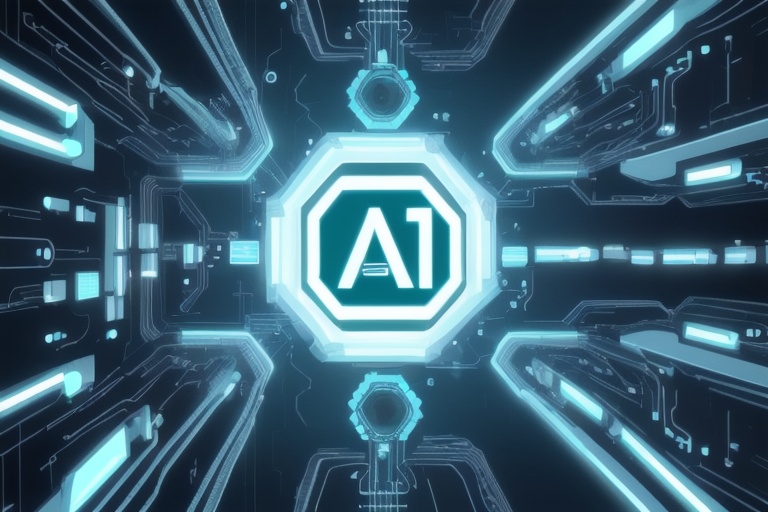Artificial intelligence (AI) and machine learning are not just buzzwords; they represent a paradigm shift in how we interact with technology and the world around us. AI is rapidly permeating every aspect of society, bringing with it a fascinating blend of opportunities and challenges, especially in the realm of content creation. AI's impact on art and literature has sparked discussions that stretch far beyond technical circles, touching upon the intricate issues of copyright and the protection of intellectual property. With this transformative technology, we are witnessing a collision between the innovation that AI represents and the longstanding rules that govern artistic creation and ownership. This article delves into this complex interplay and explores the current state, implications, and future direction of copyright in the age of AI.
Artificial intelligence (AI) and machine learning are not just buzzwords; they represent a paradigm shift in how we interact with technology and the world around us. AI is rapidly permeating every aspect of society, bringing with it a fascinating blend of opportunities and challenges, especially in the realm of content creation. AI's impact on art and literature has sparked discussions that stretch far beyond technical circles, touching upon the intricate issues of copyright and the protection of intellectual property. With this transformative technology, we are witnessing a collision between the innovation that AI represents and the longstanding rules that govern artistic creation and ownership. This article delves into this complex interplay and explores the current state, implications, and future direction of copyright in the age of AI.
Understanding AI-Generated Content
The capability of AI to produce text, images, and music is nothing short of remarkable. Generative AI models, a subset of machine learning, harness vast amounts of data to replicate and create new content. This technology has the potential to assist artists and creators, propelling them into new realms of expression. However, the ease with which AI can generate content, combined with its reliance on pre-existing works, raises important questions about originality and copyright ownership.
In the United States, the law is clear that works created purely by machines do not qualify for copyright protection. The rationale is that copyright is intended to incentivize human creativity and effort. But when an AI system is trained on copyrighted materials, it utilizes and learns from the patterns in existing works to produce something new. This creates a gray area wherein the AI's output is derived from copyrighted elements, and yet it does not neatly fit into the conventional framework of copyright law.
AI Training and Fair Use
The linchpin of the debate lies in the AI training process. Using copyrighted content to educate an AI system typically aligns with the principle of "fair use," a legal doctrine that permits limited use of copyrighted material without the need for permission, especially for purposes such as criticism, commentary, or education. However, the extent to which fair use can be applied to the data fed into AI models is currently being evaluated by courts, as lawsuits challenging existing norms make their way through the legal system.
Human-AI Collaboration Complications
When considering collaboration between humans and AI, the waters become murkier. Determining the eligibility of a piece for copyright protection becomes exceedingly complex when both a human and an AI have contributed to the creation of a work. As these collaborative efforts become more commonplace, the law will need to adapt to address the nuances of shared contributions in the creative process.
The Role of the Courts and Legal Precedents
The responsibility to clarify these copyright intricacies will primarily fall on the shoulders of the judicial system. As legal battles unfold, the courts' decisions will set the stage for what is considered protectable under U.S. copyright law. These rulings will not only impact domestic legal practices but may also serve as a benchmark for other countries grappling with the same issues.
Global Developments and Legislative Action
It's noteworthy that concerns over AI-generated content have captured the attention of legislators worldwide. In countries such as the United Kingdom and the European Union, steps are being taken to enact copyright protection measures and draft legislative frameworks that address the use of AI in content creation. These developments highlight the global nature of the issue and the need for a shared understanding across borders.
The Stance of AI and Content Creation Companies
Progressive companies within the AI and content creation spheres are leading by example. Firms like Shutterstock and Bria recognize the value that content creators and stock image providers bring to the table. These entities are taking proactive measures to ensure these contributors are fairly compensated for their work, acknowledging that without their input, AI models could potentially hinder their own progress.
The Path Forward
For generative AI to thrive, it's important to strike a balance between technological innovation and respect for artistic creativity. AI companies must navigate the legal landscape carefully. Ignoring copyright rules can result in significant financial penalties and harm the industry's reputation. By fostering collaboration, extending support to creators, and pursuing well-defined copyright regulations, we can promote a sustainable ecosystem where AI models and human creativity coexist harmoniously.
In forging ahead, continuous dialogue between tech developers, artists, legal experts, and policymakers will be crucial. The policies and precedents established today will serve as the cornerstone of tomorrow's creative industries. It is our collective responsibility to ensure that the fusion of human artistry and AI's capabilities unfolds within a framework that honors individual creativity, rewards innovation, and upholds the principles of ownership and respect for intellectual property.
Information for this article was gathered from the following source.


